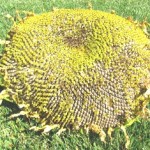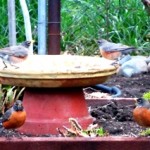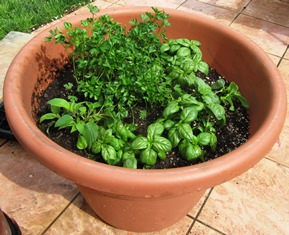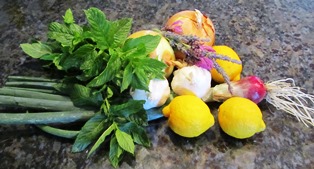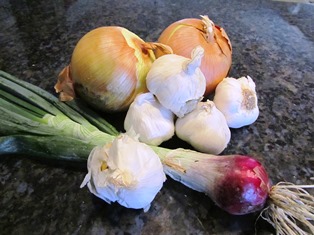Plant for the Pollinators
I seldom need an occasion to put in another bed of flowers, but this is National Pollinator Week. I think a new bed is in order to attract local bees, birds, bats, and butterflies–all considered pollinators. Having these small creatures around benefits landscapes, gardens, and orchards.
The U.S. Fish and Wildlife Service has noted that over 75 percent of our plants are pollinated by birds, animals, and insects. We can help ensure these creatures will be around for a long time if we restore their habitats and ensure they have food and water.
There are many lovely plants you can grow that don’t require a lot of care.
- lavender
- bee balm
- echinacea
- sage
- cilantro
- thyme
- sunflowers
- sweet alyssum
- anemone
- borage
- geraniums
- scented pelargoniums
- mint
A tapestry of colorful herbs and flowers beautifies your landscape and pollinators love the diversity. If you don’t have a lot of space, grow some of these plants in planter boxes, clay pots, or other types of containers.
Put in a water feature, too, such as a table-top or larger fountain that recycles water. Even a pottery saucer filled each day can attract pollinators.
It won’t take long for the bees and hummingbirds to find the water. Their frequent visits are fun to watch, and they’ll likely be sipping throughout the day.
_________________________________________________________________________
If you enjoy reading about farmette topics, check out my Henny Penny Farmette series of cozy mysteries from Kensington Publishing. My newest novel includes delicious recipes, tips on keeping bees and chickens, and much more. Click on this URL for more information, http://tinyurl.com/ya5vhhpm
.
Heirloom Herbs for the Kitchen
The green stalks of the red and yellow onions I planted in late summer are now up about a foot in a raised bed. The garlic that I planted around the same time is also poking up. Having onions, garlic, and fresh culinary herbs available year-round is not impossible in the Bay Area’s mild climate, especially when they are grown in cold frames, protected areas, and raised beds.
Some will re-seed themselves in the growing beds or around your yards. We’ve got Greek oregano and chives growing all over the place. Some of my favorites herbs include basil, cilantro, chervil, chives, dill, fennel, lemon balm, lavender, oregano, mint, marjoram, rosemary, thyme, parsley, sage, and savory.
We also grow a few ornamental herbs such as borage, hyssop, and catnip (for our new kitty), tea herbs (chamomile and mint), and medicinal herbs (like echinacea).
Herbs are easy to grow. Their blooms will attract insects beneficial to the garden. Butterflies and hummingbirds are also attracted. And herbs don’t need much–light, and porous soil, warmth, and decent drainage. For a light feeding of the herbs, we make chicken poop tea. With so many varieties of herbs available, why not tuck a few in your garden or in containers in a protected but sunny and warm area of your patio to enjoy in your culinary creations?
Natural Medicines For Healing and Health
Recently, I went through a box of books that I had not unpacked after moving from Miami to Northern California. In the box was Best Remedies, a book written by Dr. Mary L. Hardy, M.D. and Debra L. Gordon for Reader’s Digest.
The book focuses on ways to use natural remedies alone or with conventional medicines in an integrative approach to healing. Many of the remedies involve the use of herbs, honey, vegetables, and oils. Listed below are just a few remedies to treat common maladies.
Chamomile
Chamomile is an herb that when made into tea can be used as a mild sedative and also fights the inflammation of a sore throat. Likewise lemon and honey in hot water can soothe swollen throat tissue.
Echinacea
For treating colds, a tincture of Echinacea purpurea and Echinacea angustifolia can provide relief when made into a tincture and mixed with hot water. Authors Hardy and Gordon recommend 1/4 – 1/2 teaspoon of the tincture in 1-2 ounces of hot water to be consumed every four to six hours.
Garlic
Traditionally used as an herbal remedy for respiratory infections, garlic, to be most effective, must be consumed raw. The best way is to peel and mash 3-4 cloves into pasta, rice, or mashed potatoes.
Ginger Root
For treating bad breath, tea made from ginger root (1- to 2-inch pieces, peeled and steeped in hot water, sweetened with honey) or peppermint tea (all types of mint are easily grown in the garden or in containers) can be effective agents.
Lavender Oil and Aloe Vera
Oil of lavender works as an inflammation and pain reducer while acting as an antiseptic; therefore, it’s a wonderful natural agent for treating minor burns. Once you have applied the lavender oil, you can also apply the sap of an aloe vera plant. Aloe reduces the pain of a burn and promotes healing.
Lemon Juice and Honey
Honey, one of nature’s antiseptics long used to treat respiratory ailments, provides a protective coating of the throat and acts as a humectant (drawing moisture) while the lemon works as an astringent to reduce swelling of inflamed throat tissue.
Olive Oil, Beeswax, and Honey
These three ingredients mixed together in equal parts can be used to treat psoriasis, a disease characterized by itchy, scaly skin. The authors recommend smoothing the mixture onto the affected area of skin before going to bed at night and then covering the skin with plastic wrap, held in place with an elastic bandage.
Onions and Garlic
Onions and garlic are recommended as two vegetables that can lower blood sugar, cholesterol, and blood pressure. Onions are high in vitamin C and, and like garlic, contain immune-enhancing compounds. Garlic reduces blood clotting (thus, preventing heart attacks) and raw garlic has strong immune-stimulating properties as well as antibacterial and antiviral benefits. For people with chronic diseases such as Type 2 Diabetes, these foods should be a regular part of the diet, according to Hardy and Gordon.
St. John’s Wort
St. John’s wort essential oil–10 drops to 1 ounce massage oil–massaged into the skin over painful areas over time may result in relief from nerve pain. Patients who have fibromyalgia, diabetic neuropathy, shingles, Lyme disease, autoimmune disorders, and other types of diseases can suffer nerve pain as stabbing, burning, and shooting sensations. Other herbs believed to revitalize nerve and brain cells include Gotu kola (an herb considered a mainstay in Ayurvedic medicine) and Evening primrose oil that fights inflammation and is found in black currant and borage oil.
Grow these herbs in a garden or in containers on your patio for use to restore and maintain health and also for enhancing flavors in your cooking.
 Facebook
Facebook Goodreads
Goodreads LinkedIn
LinkedIn Meera Lester
Meera Lester Twitter
Twitter





